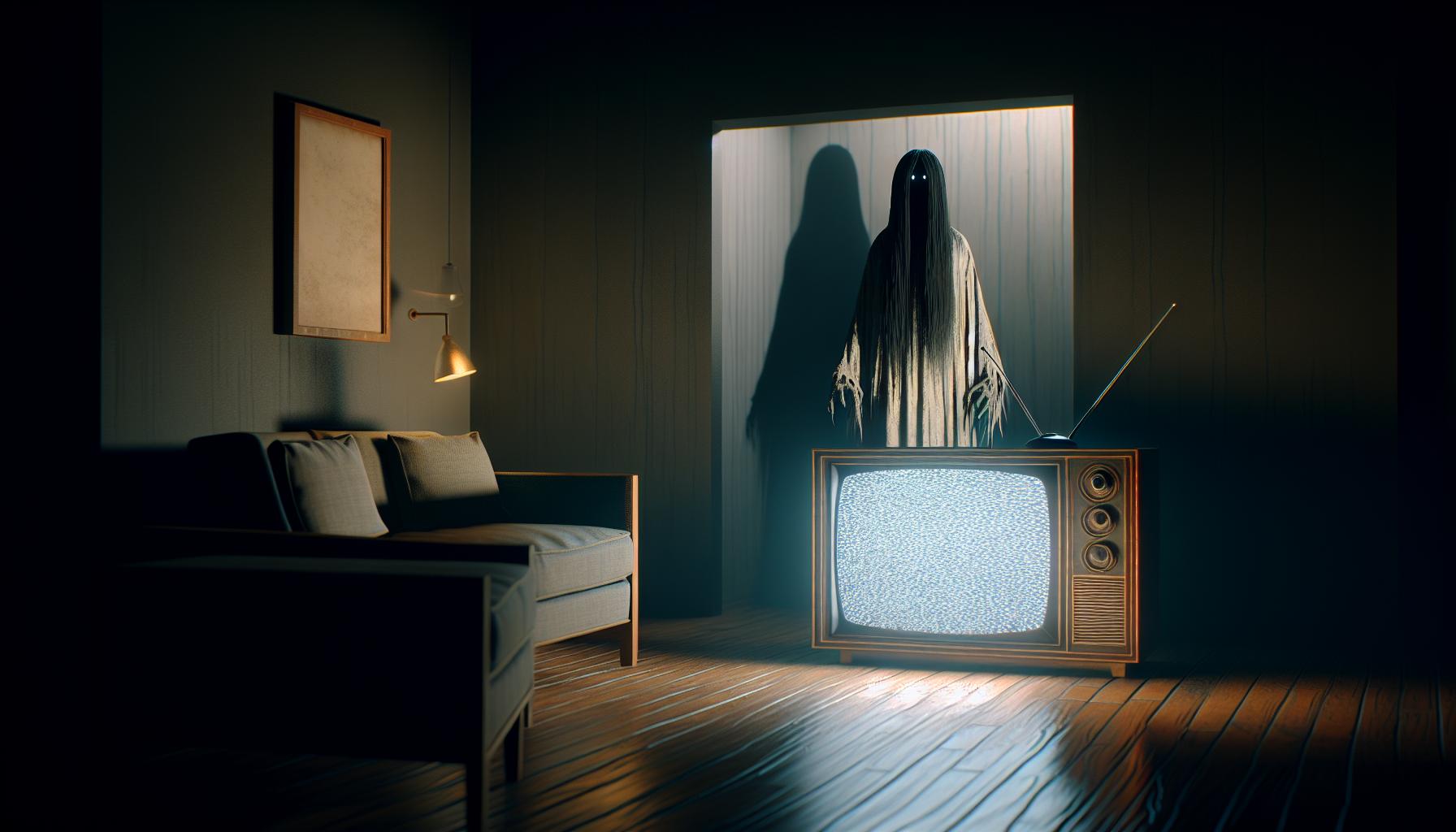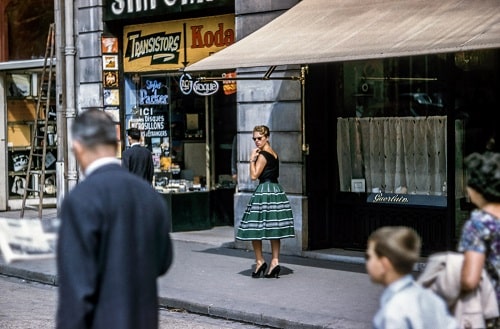Venturing beyond Hollywood often leads to discovering cinematic treasures that redefine the contours of fear. Foreign horror films, with their unique cultural perspectives and unorthodox storytelling techniques, offer a fresh and visceral experience that’s markedly different from their American counterparts. They tap into universal anxieties while weaving in local folklore and traditions, making them intriguingly familiar yet thrillingly alien.
From the shadowy corridors of a South Korean haunted house to the eerie silence of a Japanese ghost town, international horror films transport viewers to settings that are as captivating as they are chilling. These films don’t just scare; they immerse audiences in atmospheric tales that linger long after the credits roll. Let’s delve into some of the best foreign horror films that have left global audiences both terrified and mesmerized.
The Ring (1998)
Overview
“The Ring” (1998), originally titled “Ringu,” is a Japanese horror film directed by Hideo Nakata. This film stands as a cornerstone in the horror genre, not just within Japan but globally, stirring a new wave of interest in Asian horror cinema. Based on Koji Suzuki’s novel of the same name, “The Ring” introduces viewers to a chilling tale of a cursed videotape that promises death to those who watch it within seven days.
Plot and Atmosphere
The movie follows Reiko Asakawa, a journalist investigating the mysterious deaths linked to the tape. The investigation drives her into a dark, atmospheric journey as she unravels the story behind Sadako, the malevolent entity within the tape. Nakata expertly uses suspense rather than gore to create horror, building a looming dread that is palpable throughout the film. The slow uncovering of the tape’s origin and the eerie, silent stretches accentuate the film’s unsettling ambiance.
Cultural Impact and Legacy
“The Ring” not only enjoyed massive box office success in Japan but also spawned a slew of remakes and adaptations across the world, including the well-known American version. Its impact is manifold; it redefined horror tropes with its unique blend of psychological fear and supernatural elements, influencing an entire generation of filmmakers and horror stories. The iconography of Sadako emerging from the television screen has become a defining image of horror, imprinted in popular culture.
Comparison With Other Horror Films
When compared to contemporaries such as South Korea’s “A Tale of Two Sisters” and Spain’s “The Orphanage,” “The Ring” stands out for its unique premise and deep psychological horror. Unlike the visceral horror found in many Western films of the time, “The Ring” relies on a creeping dread that grows with each passing scene, a tactic that has led to its enduring popularity and critical acclaim.
Value Analysis
Considering its profound influence on both cinema and culture, “The Ring” offers tremendous value beyond its entertainment quotient. Its innovative approach to storytelling and its ability to maintain tension without conventional horror elements make it a seminal work in global cinema. The quality of the film, coupled with its relatively modest budget, showcases how impactful and transformative good storytelling can be, setting a high bar for future films in the genre.
The Babadook (2014)
Overview and Impact
“The Babadook,” directed by Jennifer Kent, marks a significant entry in the genre of foreign horror films, originating from Australia. This film tells the story of Amelia, a widowed mother, who battles with her son Samuel’s fear of a monster lurking in their house, only to discover that the monster may be real. As the narrative unfolds, “The Babadook” delves into deep themes of grief, motherhood, and mental illness, presented through the lens of psychological horror.
Storytelling and Techniques
Distinct from more traditional horror films, “The Babadook” relies heavily on psychological elements combined with real-life fears. Jennifer Kent employs a minimalist approach, using the stark, gloomy interiors of Amelia’s house to amplify the suspense and fear. The absence of heavy reliance on special effects to inspire fear distinguishes it in the genre. Instead, the film uses the haunting presence of the Babadook creature, ingeniously crafted through practical effects and shadow play, which adds an eerie, visceral fear that lingers with the audience.
Cultural Elements and Cinematic Execution
The Babadook does an exemplary job incorporating Australian suburban setting, which provides a perfect backdrop for the unfolding horror, making it relatable yet distinctly Australian. The film’s sound design deserves special mention; the unnerving sounds contribute significantly to the building tension, translating the psychological disturbances into auditory experiences for the audience. This effective use of sound demonstrates a mastery of film-making that brings the internal struggles of the characters to life.
Comparison and Value
When placed alongside other foreign horror films like “The Ring,” “The Babadook” offers a shift from the supernatural to the internal demons within. This method of storytelling speaks to a more intimate, character-driven narrative, where the true horror comes from within rather than external forces. The economical use of the horror elements and focus on character development offers a fresh perspective compared to the more overt horror tactics used in other films. It invokes a different kind of fear, one that is psychologically profound and unsettling.
Overall, “The Babadook” stands out not just for its horror elements but for its deep exploration of human emotions and psychological trauma, making it a standout piece in the realm of foreign horror cinema.
Train to Busan (2016)
Overview
“Train to Busan” is a South Korean horror film directed by Yeon Sang-ho. This movie stands out not only for its thrilling zombie outbreak narrative but also for its poignant examination of human nature under duress. The story is set aboard a high-speed train from Seoul to Busan as a zombie apocalypse suddenly breaks out, threatening the safety of the passengers.
Plot and Setting
The plot follows Seok-woo, a divorced fund manager and his estranged daughter, Su-an, as they board the KTX train to Busan where Su-an intends to visit her mother. However, their journey is thrown into chaos as an infected passenger boards the train, sparking a fast-spreading zombie outbreak throughout the carriages. The confined setting of the train adds to the suspense, as survivors are forced into close quarters battles and moral dilemmas, making for a tumultuous ride.
Themes and Cinematic Techniques
Yeon Sang-ho masterfully uses the zombie epidemic as a backdrop to explore themes of social hierarchy and human selfishness. The film is noted for its social commentary, particularly through the portrayal of its characters, from the self-serving COO of a company to the working-class husband and his pregnant wife, each adding layers to the narrative’s critique of societal norms.
Cinematic techniques such as tight, claustrophobic camera work and rapid editing amplify the intensity of the scenes, making the viewer feel the cramped and frantic nature of the predicament. This is complemented by effective use of makeup and special effects that bring the horrifying zombies to life.
Comparison with Other Foreign Horror Films
When compared to “The Ring” and “The Babadook,” “Train to Busan” leans more heavily into action-packed sequences and traditional horror, marking a distinct style within the genre. Unlike “The Babadook,” which delves deep into psychological terror, “Train to Busan” combines both emotional narratives with edge-of-your-seat suspense, appealing to a broad audience range. Its approach to horror, incorporating fast-paced action with deep social themes, sets it apart in the category of foreign horror films.
Cultural Impact and Reception
Since its release, “Train to Busan” has not only been a box office hit in South Korea but has also garnered critical acclaim worldwide for its innovative approach to the zombie genre. The film’s ability to evoke both fear and empathy, coupled with strong performances by the cast, has resonated with audiences globally, contributing to the growing popularity of Korean cinema. Its international success has sparked discussions about the versatility and global appeal of Korean films, reaffirming the impact of cultural storytelling through cinema.
Raw (2016)
“Raw,” directed by French filmmaker Julia Ducournau, stands out in the realm of foreign horror films for its audacious narrative and visceral imagery. Released in 2016, the film tells the gripping story of Justine, a young vegetarian who develops a craving for human flesh after a carnivorous hazing ritual at her veterinary school. The film is not only a coming-of-age tale but also a complex exploration of identity, body horror, and societal norms.
Design and Cinematic Techniques
The cinematography of “Raw” is particularly noteworthy. Ducournau uses a palette of stark, clinical whites and greens juxtaposed with the shocking reds of blood and raw meat, effectively using color to enhance the film’s thematic depth. The claustrophobic settings of the veterinary school contribute to a growing sense of unease that complements the film’s narrative arc.
Long takes and close-ups are employed to create an intimate yet uncomfortable viewing experience, pulling the audience into Justine’s increasingly conflicted psyche. The director’s choice to use practical effects for the more gruesome scenes adds a layer of realism that CGI could not replicate, making the horror more palpable and disturbing.
Performance and Impact
The performance by Garance Marillier as Justine is a highlight. She delivers a nuanced portrayal that evolves from innocence to something much darker, driving the narrative forward with her compelling transformation. Her ability to convey deep, conflicting emotions without dialogue showcases her skills and enhances the film’s psychological tension.
“Raw” sparked significant reactions upon its release, with reports of audience members feeling faint and shocked during screenings. However, beyond the initial shock value, the film has been acclaimed for its innovative approach to horror, fusing bodily horror with psychological depth in a way that is seldom seen.
Comparison and Value
When compared to previously discussed films like “The Babadook” and “Train to Busan,” “Raw” introduces a more introspective yet equally unsettling approach to horror. Unlike “The Babadook,” which explores psychological terror through the lens of motherhood and grief, “Raw” delves into the horror of self-discovery and transformation. Similarly, while “Train to Busan” utilizes its horror elements to critique societal issues, “Raw” uses its narrative to challenge the norms and taboos around the human body and autonomy.
Ducournau’s film does not just aim to horrify but to provoke thought and discussion about what is culturally considered taboo. It’s a daring piece that successfully uses the horror genre to explore complex themes, making it a significant contribution to the world of foreign horror cinema. This blend of thematic richness and shocking content creates a unique cinematic experience, offering a fresh perspective on horror that challenges both the mind and the senses.
The value of “Raw” in the foreign horror film landscape is considerable. It pushes the boundaries of traditional horror and invites viewers to confront their fears and prejudices, making it a standout piece that enriches the genre.
Goodnight Mommy (2014)
Overview
“Goodnight Mommy,” an Austrian psychological horror directed by Veronika Franz and Severin Fiala, presents an intense exploration of identity and trust through the eyes of twin brothers. Positioned in a remote countryside home, the setting itself adds an eerie layer to the unfolding narrative. The film introduces viewers to a mother, covered in bandages post-cosmetic surgery, who returns home to her sons who begin to suspect that she might not actually be their mother. This suspicion kicks off a disturbing sequence of events, teetering between reality and paranoid fantasy.
Cinematic Techniques and Performance
The directors employ a minimalist style, focusing heavily on visual storytelling and atmospheric tension rather than dialogue. The austere, almost clinical visual approach not only complements the story’s themes but also amplifies the psychological horror, drawing the audience deeper into the unsettling suspicions of the twins. Lukas Schwarz and Elias Schwarz deliver haunting performances as the twins, their interactions capturing a chilling innocence twisted by growing dread and mistrust.
Thematic Depth and Reception
“Goodnight Mommy” delves into themes of familial bonds, identity, and the eerie uncanny, allowing the psychological horror to resonate with primal human fears. The film’s slow-burn pacing might challenge some viewers, but it effectively builds to a climax that forces an emotional, if horrifying, contemplation of motherhood and identity. It received critical acclaim for its clever plot twists and the directors’ ability to maintain suspense and atmosphere, making it a standout in the genre for its intelligent design and execution.
Comparison With Other Foreign Horror Films
When compared to other films like “The Ring” or “The Babadook,” “Goodnight Mommy” employs a more direct approach to the horror of identity displacement, differentiating it with its stark realism blended with psychological terror. Unlike “The Babadook,” which leverages psychological disturbances stemming from within, “Goodnight Mommy” externalizes the fear, creating terror from what may or may not be true about the most familiar of faces — one’s mother. This approach offers a refreshing contrast to the more internalized horrors presented in “The Babadook,” providing a unique narrative lens in the foreign horror cinema landscape.
“Goodnight Mommy” stands as a compelling piece of cinematic horror, effectively using its minimalist style and psychological narrative to engage and disturb its audience.
Final Thoughts on Foreign Horror Films
Exploring these films reveals how foreign horror transcends cultural boundaries to tap into our deepest fears. From “The Ring” to “Goodnight Mommy,” each film offers a unique lens through which to view the universal themes of fear and the unknown. They challenge viewers to confront their anxieties in ways that are as culturally enlightening as they are terrifying.
These films not only entertain but also enrich our understanding of horror as a diverse and dynamic genre. Whether it’s through the psychological depth of “The Babadook” or the societal critiques in “Train to Busan,” these movies prove that horror can be both profoundly intimate and broadly relevant.
So next time you’re in the mood for something that’ll keep you up at night, consider diving into the rich world of foreign horror films. You might just find your new favorite.



 RELATED POSTS
RELATED POSTS





0 Comments